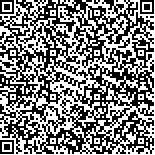下载中心
优秀审稿专家
优秀论文
相关链接
摘要

针对遥感卫星影像几何定位时实测控制数据不足的情况,提出利用影像范围内基准影像数据辅助定位提高精度的方法。由遥感影像匹配得到同名像点,利用高精度影像数据和高程数据获取物方平面和高程坐标后,将其视为精度较低的控制点参与区域网平差,从而实现在不额外增加实测控制条件的情况下提高定位精度。经过在国内外3个地区进行一系列试验,验证了方法的可行性和有效性,对提升线阵遥感影像几何定位精度效果显著。
Geometric positioning of satellite images, as one of the keys in producing geo-information products, plays an important role in development of national economic. In general, actual measured ground control data is necessary in geometric positioning of satellite images to correct systematic errors and then increase accuracy. However, the actual measured ground control data is high cost and difficult to obtained in some place. Considering lack of actual measured ground control data in some situations, a method of geometric positioning based on RFM with reference images to increase accuracy was proposed in this paper.
The auxiliary control points extracted from high-precision images and digital elevation model (DEM) are used in geometric positioning based on RFM. Firstly, plenty of corresponding image points are matched from satellite images. The horizontal and elevation coordinates of the corresponding image points which named auxiliary control points are measured in high resolution reference images and elevation data and transformed into a unify coordinate system. Then, the auxiliary control points are used as ground control points with low accuracy in block adjustment without additional actual measured ground control data.
Three kinds of satellite images including IKONOS images in Hobart, Australia, ZY-3 images in Sainte-Maxime, France, and TH-1 images in Dengfeng, China were used in the experiment in this paper, and the auxiliary control points named GE points were extracted from Google Earth data. The experiment divided into two parts, the first part was geometric positioning with the same amount of actual measured ground control points and GE points in the same position to analyze the accuracy of GE points, the result of which showing that there were systematic errors in both actual measured ground control points and GE points, the relation between two kinds of points depending on the quality of the satellite images. Another part of the experiment was block adjustment using GE points as ground control points and was designed in two cases, one was without actual measured ground control points and another was with few. It was found that the systematic errors were reduced and the accuracy were increased by proposed method in three experimental areas in both cases. Especially in the case without actual measured ground control points, the accuracy was increased obviously with plenty of GE points. Furthermore, the effect of the method was highly negatively correlated with the quality of the satellite images.
The experimental result shows that the auxiliary control points extracted from reference images could be used as ground control points, proving the feasibility and availability of proposed method, which has good effect to increase accuracy of geometric positioning in the case without enough actual measured ground control data.

